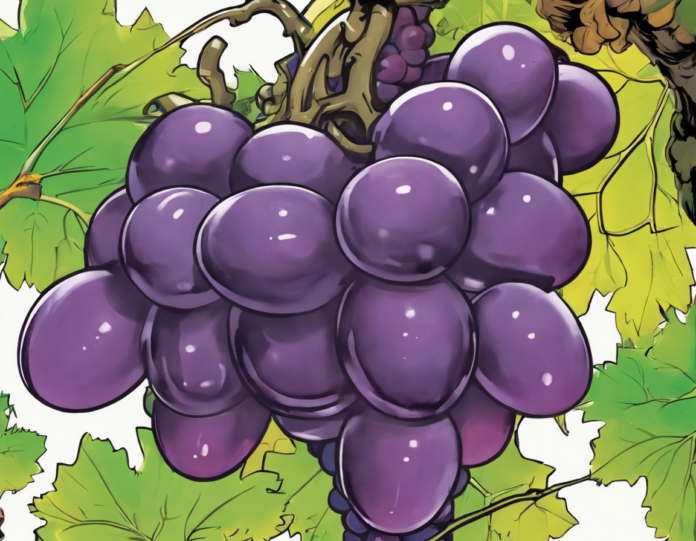Are you a wine enthusiast looking to expand your knowledge and appreciation of all things grape-related? Look no further than the aromatic world of Grape Gas. This comprehensive guide will take you on a journey through the various aromatic compounds found in wine, how they contribute to the overall flavor profile, and what sets different grape varieties apart. From fruity to floral, spicy to earthy, understanding these aromatics will not only enhance your tasting experience but also deepen your understanding of the complex world of wine.
The Science Behind Aromatics in Wine
What are Aromatic Compounds?
Aromatic compounds are volatile molecules that give wine its distinct aromas. These compounds are found in the grape skins, stems, and seeds, and are released during the winemaking process. They play a crucial role in determining the overall flavor profile of a wine.
Types of Aromatic Compounds
1. Terpenes
Terpenes are a class of aromatic compounds found in many fruits and flowers. In wine, they are responsible for floral and citrus notes. Grape varieties like Gewürztraminer and Muscat are known for their high terpene content.
2. Pyrazines
Pyrazines are found in green bell peppers and are often associated with herbaceous aromas in wine. Varietals like Sauvignon Blanc and Cabernet Sauvignon contain pyrazines, giving them their distinctive green, herbaceous notes.
3. Thiols
Thiols are sulfur-containing compounds that can exhibit a range of aromas, from tropical fruits to garlic and onion. Varieties like Sauvignon Blanc from New Zealand are renowned for their intense thiol aromatics.
4. Esters
Esters are compounds formed by the reaction of acids and alcohols. They contribute fruity aromas to wine, such as apples, berries, and tropical fruits. Varieties like Riesling and Chardonnay contain a high concentration of esters.
Grape Varieties and Aromatics
Understanding Grape Varieties
Different grape varieties contain varying levels of aromatic compounds, which is why some wines are more aromatic than others. Here are a few examples of grape varieties known for their distinct aromatics:
1. Gewürztraminer
Gewürztraminer is famous for its intense floral and lychee aromas, thanks to its high terpene content. This wine is a favorite among those who enjoy aromatic white wines with a touch of sweetness.
2. Syrah/Shiraz
Syrah/Shiraz is a red grape variety known for its spicy, peppery aromas. Depending on the region where it’s grown, Syrah/Shiraz can also exhibit notes of black fruits, tobacco, and leather.
3. Pinot Noir
Pinot Noir is celebrated for its elegant and complex aromatics, which can include red berries, earthy notes, and floral undertones. It is a versatile grape that reflects its terroir exceptionally well.
How to Enhance Your Wine Tasting Experience
Tips for Aromatics Appreciation
1. Swirl and Sniff
Before taking a sip, give your wine a gentle swirl in the glass to release its aromas. Bring the glass to your nose and take a moment to sniff the bouquet. Consider the various notes you detect, from fruits to spices to earthy undertones.
2. Experiment with Food Pairings
Pairing wine with the right food can enhance its aromatics. For example, a spicy Syrah/Shiraz pairs beautifully with grilled meats, while a floral Gewürztraminer complements spicy Asian dishes.
3. Try Different Glassware
The shape and size of the glass can impact how the aromatics are perceived. Experiment with different glassware to see how it influences your wine tasting experience.
Frequently Asked Questions (FAQs)
1. What is the best way to store aromatic wines?
To preserve the aromatics of your wines, store them in a cool, dark place with a consistent temperature. Avoid exposing them to sunlight or fluctuations in temperature.
2. Can aging wine affect its aromatics?
Yes, aging can change the aromatics of a wine. Some wines develop more complex aromas as they age, while others may lose their vibrancy over time.
3. How can I improve my sense of smell for wine tasting?
Practice is key to improving your sense of smell. Consider using a wine aroma kit to familiarize yourself with different aromas and enhance your olfactory senses.
4. Are there ways to enhance the aromatics of a wine before serving?
Decanting wine can help enhance its aromatics by exposing it to oxygen. This process allows the wine to “breathe,” releasing more of its aromatic compounds.
5. Do different wine regions produce distinct aromatics in their wines?
Yes, the terroir of a region, including factors like climate, soil, and winemaking techniques, can influence the aromatics of a wine. Wines from different regions can exhibit unique aromatic profiles.
In conclusion, exploring the aromatic world of Grape Gas is a fascinating journey that can enrich your wine tasting experience. By understanding the science behind aromatics, exploring different grape varieties, and following tips for appreciation, you can develop a deeper appreciation for the diverse aromas found in wines. So pour yourself a glass, take a moment to savor the bouquet, and let the aromatics transport you to a world of sensory delight.





